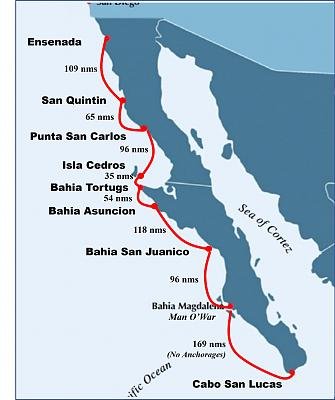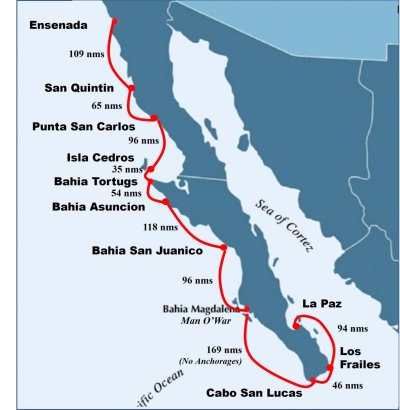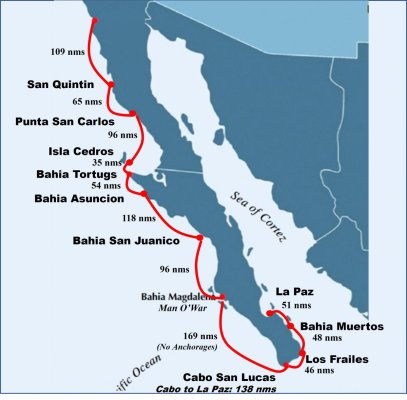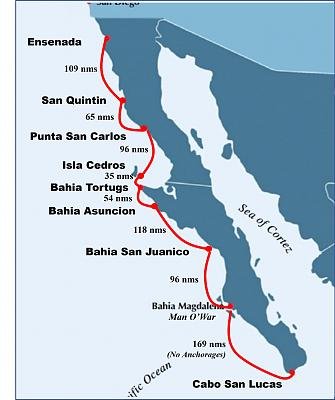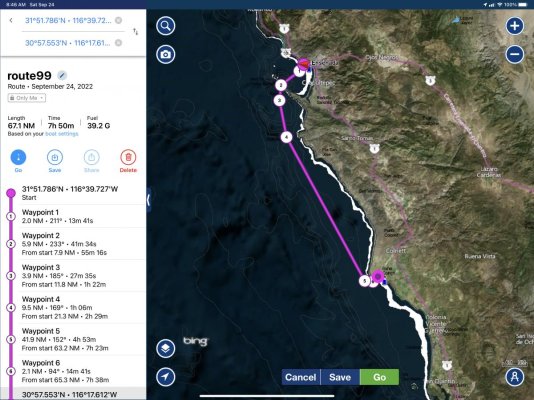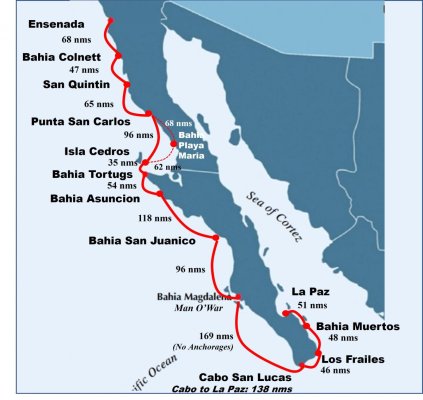Have you guys settled on charts? My experience is about 5 years old at this point, but back then the c-map charts were dangerously inaccurate. Navionics was a bunch better, but still problematic in many areas. For any place where I would come close to land, especially anchorages, I would cross check everything again satellite images. I'd suggest making certain that you have them on your chart plotter. More often than not, the charts were not correctly geo-referenced. For example, Puerto Escondido is shown with no details on c-map, and and is miss-located by about 1/2 nm.
Well, it's complicated. I can only speak for myself as I have been meaning to ask others their plan. But for me, a work-in-progress. Recall, we (TT and I) had a tangent discussion several months ago that CMAP somehow missed the 1/4-mile long breakwater extension into Ensenada harbor that was finished 3-years ago. So I am a bit leery from that experience alone. Add to that my ancient delivery files includes a few pictures of MFD readouts along the Central American coastline showing the boat on the beach. I mean, let's face it - 99% of the vessels transiting these areas are local fishermen, many are pangas with pull-start outboards and no running lights. The rest are a
source of local information, not a buyer. Not exactly the demographic I would target to sell updated charts. Safe assumption is all charts are suspect at least some of the time. Russian Roulette comes to mind.
When I joined TF (and CF) a few years ago, my goal was to emerge from a 10+ year boating hibernation, mostly to learn updated weather products and access. Now you know I love TF, post a lot, and try to contribute as much as I can. But......while there is great information on many things 'normal,' finding information on remote cruising has been hit or miss. So I found
southboundgroups@groups.io (I think I have that right). A group of active cruisers mostly in Mexico (La Paz is well-represented), but decent experience down to Panama. Charts are a big topic. And, as you can imagine, OpenCPN is favored (OpenCPN confounds me).
So I have entered the world of KAP files and trying to figure out Sat2Chart conversions where you take a GoogleEarth projection and overlay. Jury is still out as it is predicated on two things: First, is it a sensible approach? (I have my doubts). Secondly, whether my feeble tech capabilities can figure it out before my well-developed frustration punches a hole in my laptop screen. Between the two, odds of success are so-so at best, but I'll keep you posted. TT, if you have started down that path, I'd love to shorten my learning curve.....
Back-up plan is to use the GPS waypoints from the Rains' guides in
"Mexico Boating Guide" for Baja, and when I make it to mainland Mexico, the waypoints from Blue Latitude's guides (waypoints can be downloaded for a modest fee to prevent fat-finger errors).
Finally, will be heavy on the "Old School" techniques of being very conservative. From time to time I mention that in 1542 (?) Sir Francis Drake careened his Golden Hind on the shores of what is now Drakes Bay, 25 nms north of the Golden Gate. Why there instead of somewhere in SF Bay? Because he didn't know SF existed. With prevailing weather making the Pacific Coast a lee-shore, and Drake having no charts to speak of, he held well-off the coast and simply missed San Francisco Bay. If you could see my routes and approaches, you would see very conservative waypoints. And as I've already posted, I time my arrivals, not my departures, meaning I want to be somewhere by about lunchtime. For me, significantly more conservative than my old delivery methods where I had confidence and knowledge.
So, that's my plan. TT - would welcome your input. I have a lot of respect for your experience and knowledge.
Peter

